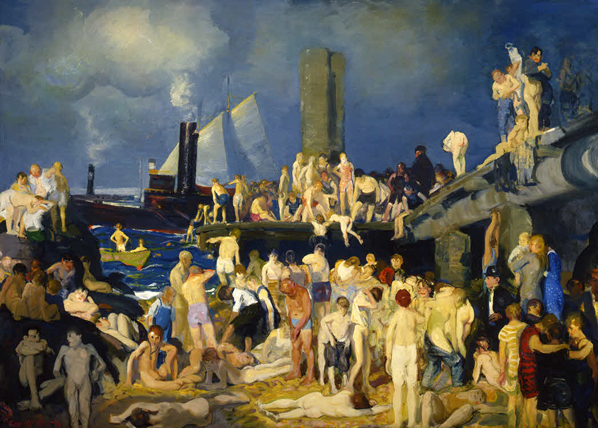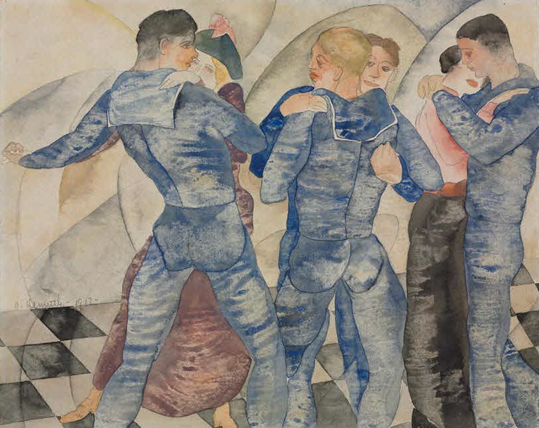Museum
The Exhibition was held at the Brooklyn Museum of Art (NY) between the dates of November 18, 2011–February 12, 2012.
Participating Artists
The HIDE/SEEK: Difference and Desire in American Portraiture harbored a considerable number of talented artists. Initially, the main organizers of the event included the National Portrait Gallery as well as the Smithsonian Institution (Brooklyn Museum, 2012). However the exhibition was restructured by the Brooklyn and the Tacoma Art Museums. The presenting artists in the original setting include David C. Ward of the National Portrait Gallery and Jonathan D. Katz who is the director for the visual studies doctoral programs, State University of New York at Buffalo.
Tricia Laughlin Bloom, the project curator, coordinated the Brooklyn Museum. The notable artists that took part in this exhibition included George Bellows, Marsden Hartley, Alice Neel, and Berenice Abbott (COTTER, 2010). Jess Collins and Tee Corinne also featured in the exhibition. AA Bronson, Félix González-Torres, and Annie Leibovitz also highlighted critical artistic features in the exhibition.
Similarity or Differences of the Exhibition from the Museum’s Previous Exhibitions
Notably, the HIDE/SEEK: Difference and Desire in American Portraiture exhibition remains unique from other Brooklyn Museum’s previous exhibitions in several ways. For example, this exhibition featured magical presentation steered by prominent personalities within the American art scene (Morris, 2010). Renowned artists such as George Bellows, Marsden Hartley, as well as Alice Neel, made the exhibition more explosive and inspiring. Additionally, the presence and presentations o f Jess Collins and Tee Corinne provided a unique outfit of the exhibition. This is because these two artists developed and presented works that explicitly asserted the gay as well as lesbian characters. Particularly, this was done within the context of fashionable and contemporary art.
The fusion of the modern and the ancient American pictorials and artistic lifestyle gave this exhibition a unique touch from other previous ones (Preziosi, 2009). Particularly, another unique feature was the integration of the general humanity as the basis for artistic presentation. Basically, most previous exhibitions have dwelt on non-human objects and general imaginations. However, these presentations revealed detailed information about the human lifestyle and the overall societal behavior within the ancient and the modern America (Morris, 2010).
The ability of the exhibition to provide a vivid picture of the existent disparities or differences between individual’s sexual identities makes it unique and different from other previous exhibitions. Apart from revealing or showcasing the linkages that are existent between individual’s sexual orientation and formal advancements within the modern art, this exhibition also presented other unique insights.
The HIDE/SEEK presented the artists’ reactions to the renowned Stonewall Riots of 1969 (Brooklyn Museum, 2012). Apart from this, there was a presentation of the artist’s response to the AIDS epidemic. Other crucial presentations included the showcasing of the postmodern themes related to identity. These were showcased using great artistic pieces by the prominent artists like AA Bronson, Félix González-Torres, as well as Annie Leibovitz. More than merely documenting the renowned subculture normally left to the margins of an American art, this exhibition provided a distinct sampling (COTTER, 2010). This included the survey of a more than one century of the American portraiture. Finally, it is clear that the HIDE/SEEK steered the movement to a highly nuanced and comprehensive understanding of contemporary art within America.
The Initial Impression of the Exhibition
The title of the museum exhibition, “HIDE/SEEK” offered me an impression of sort of an artistic or drama performance. Evidently, it was hard to comprehend the context of the title to an artistic exhibition. However, the lessons learnt and impressions that were derived from the first presentation were enough to give critical insights.
Analysis
The “HIDE/SEEK” title of the exhibition provides a unique umbrella to all the artistic presentations. Basically, the tendency of the presenters to provide critical information about mans’ nudity within the present and past American life is another uniting factor (COTTER, 2010). The design applies unique colours and shading that is common to all paintings. The artist’s bibliographical information is another uniting factor. This is because almost all artists presented portray the ancient and modern unique works. Analytically, the museum curator tries to convey critical message to the general American society.
Through the presentation of artistic works regarding the different sexual orientations within Americans, there is an important message for people to accept inclusiveness within the present American society. The application of unique design and use of ancient setting in the artistic presentations convey important concepts within the exhibition (Morris, 2010). The organization of presentation mechanisms, durations and intervals create a rhythmic and consequential comprehension of the intended information within the audience. Basically, it potentiates to be a story implied within an artistic work. Because all the presentations are centered on the humanistic sexuality and different characters, all artist remained relevant and in pattern with the prevailing aesthetic and conceptual presentation.
Evaluation
The knowledge and insights obtained after an analysis of all the artistic presentations that featured in the HIDE/SEEK: Difference and Desire in American Portraiture presentation potentially transformed my initial impressions. Initially, the title of the museum exhibition greatly manipulated my imaginations and impressions. Being my first attendance of a unique exhibition, comprehending the title and relating it to the upcoming presentations was considerably tricky. I personally had diverse reactions to these artistic works. At the start of the presentation, I imagined the exhibition was not fit for certain age category. The paintings barely presented nude pictures of humans (COTTER, 2010). This was coupled with a unique background and a mixture of both sexes.
Perhaps, I failed to understand the implicit intention of the artists or presenters to provide a vivid and inclusive nature of the American society. I particularly agree with the art reviews I read relating to these presentations and the entire exhibition. Basically, I attest to the critic that most of the paintings were not fit for disclosure to persons of a particular age. Specifically, this relates to the teenage group (Morris, 2010). This is because of the presentation of the nude paintings that aimed to communicate different human sexuality themes in the ancient American.
I personally find most presentations in the exhibition aesthetically amusing. This is because of the figurative and symbolic messages that these paintings try to communicate to the normal audience. The symbolic presentations comically illustrate why different sexual orientations, including homosexuality prevailed in the American society. Perhaps, it is only considerate to indicate that even though some of the pictures might not be fit for the younger persons, they hold great sense in the comprehension of the emergence of homosexuality (COTTER, 2010). The artistic works are conceptually engaging. This is because the paintings are so full of humanistic life. Coupled with a logical presentation, the work gives a practical view of the sexual life events during that period.


References
Brooklyn Museum (2012). Exhibitions: HIDE/SEEK: Difference and Desire in American Portraiture. Web.
COTTER, H. (2010). Sexuality in Modernism: The (Partial) History. Web.
Morris, K. (2010). Hide/Seek: Difference and Desire in American Portraiture. Web.
Preziosi, D. (2009). The art of art history: A critical anthology. Oxford: Oxford University Press.